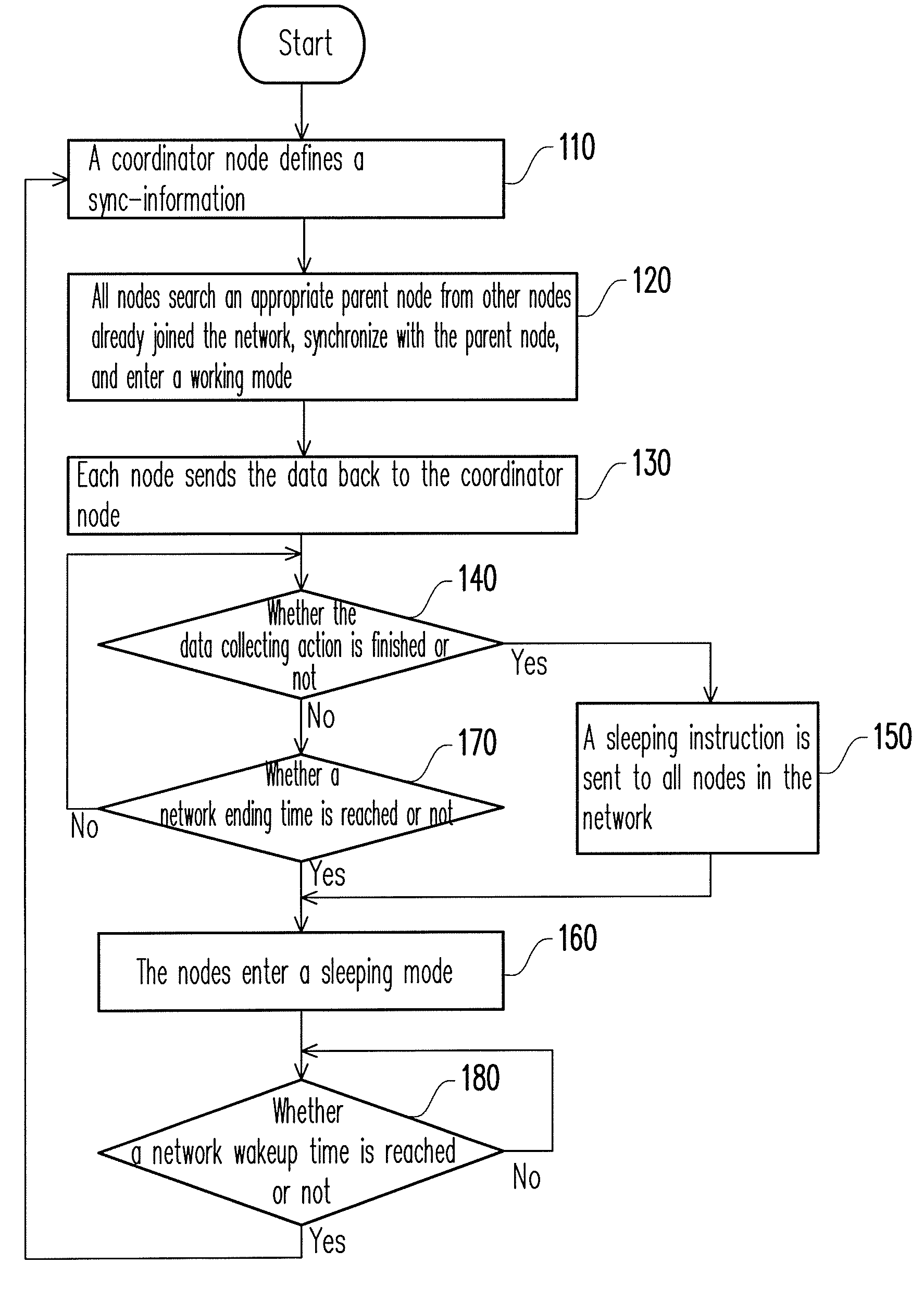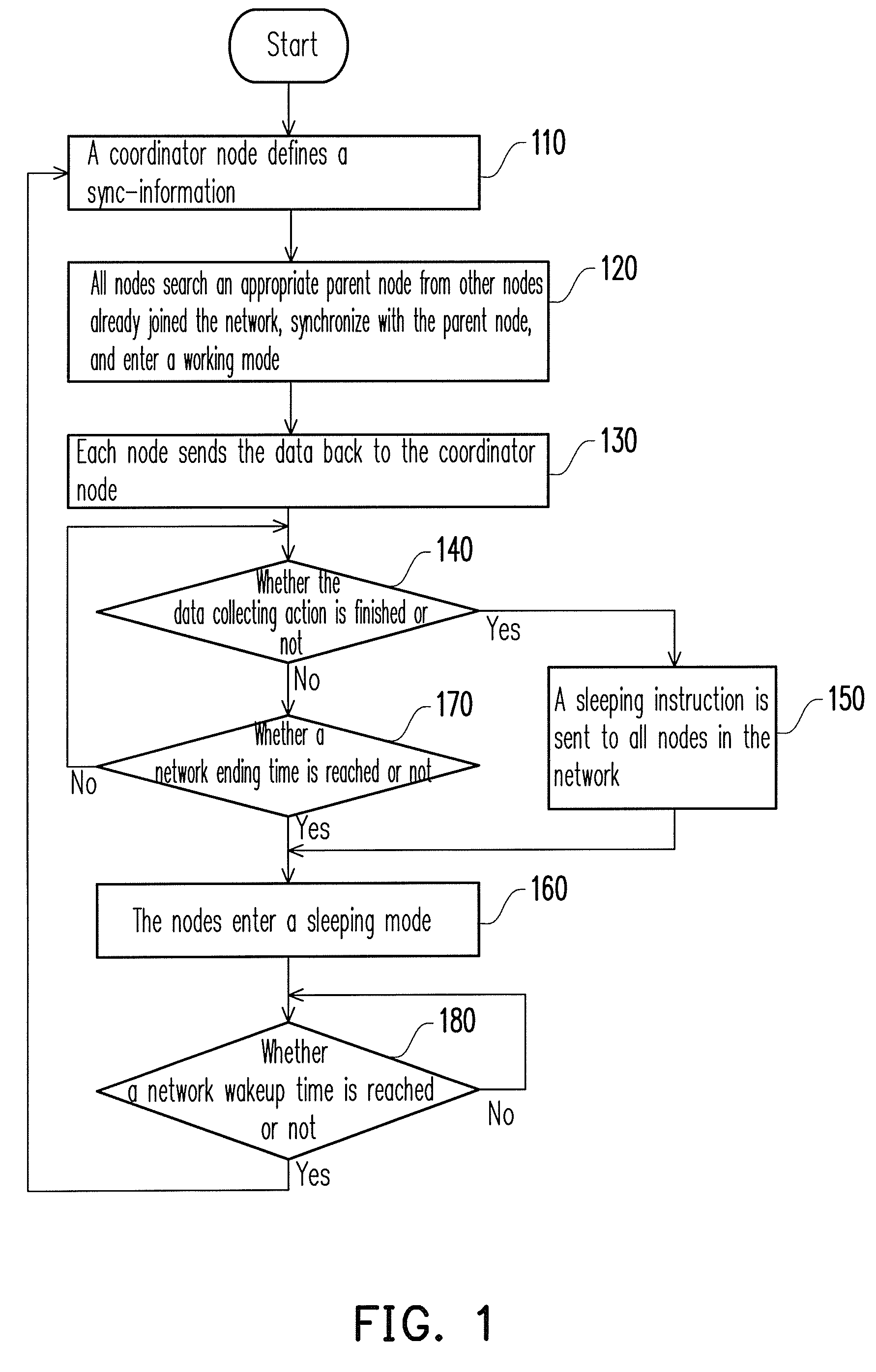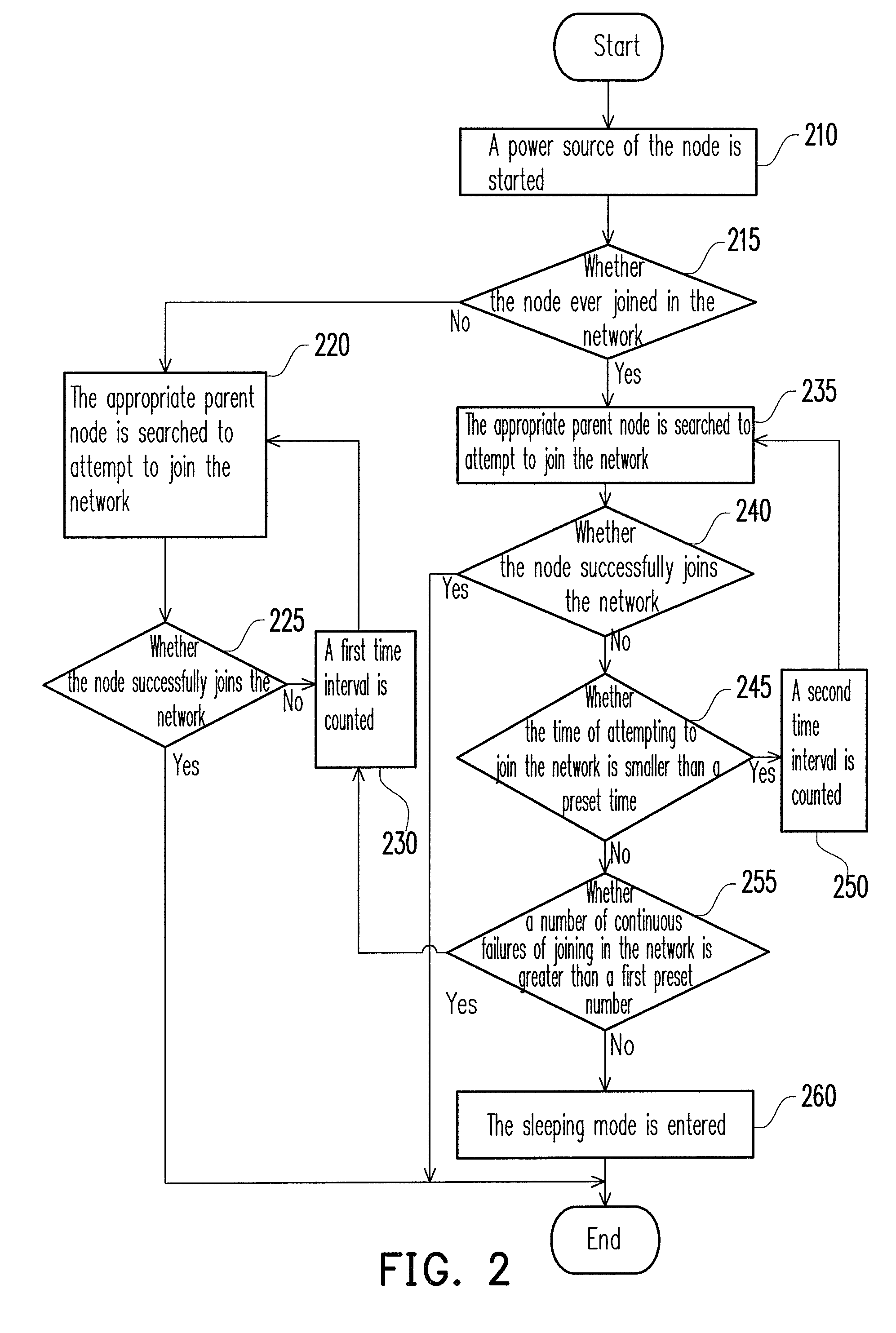Method and system for network synchronization
a network and synchronization technology, applied in the field of network applications, can solve the problems of increasing hardware costs, reducing the power consumption of the rf, and difficult to obtain and wire permanent power sources, and achieve the effect of saving the total power consumption of the network
- Summary
- Abstract
- Description
- Claims
- Application Information
AI Technical Summary
Benefits of technology
Problems solved by technology
Method used
Image
Examples
Embodiment Construction
[0043]Reference will now be made in detail to the present embodiments of the invention, examples of which are illustrated in the accompanying drawings. Wherever possible, the same reference numbers are used in the drawings and the description to refer to the same or like parts.
[0044]FIG. 1 is a flow chart of a method for network synchronization according to an embodiment of the present invention. In this embodiment, under a network architecture with the power supplied by, for example, a battery, detailed steps of synchronizing all nodes intending to join the network with an operating timing of the network are described. The network may be a wireless sensor network (WSN), and a most upstream of the network has a coordinator node capable of being connected to a computer system through Ethernet or an RS232 interface, thereby sending the integrated network data to the computer system. In this network architecture, the coordinator node is, for example, connected to a permanent power sour...
PUM
 Login to View More
Login to View More Abstract
Description
Claims
Application Information
 Login to View More
Login to View More - R&D
- Intellectual Property
- Life Sciences
- Materials
- Tech Scout
- Unparalleled Data Quality
- Higher Quality Content
- 60% Fewer Hallucinations
Browse by: Latest US Patents, China's latest patents, Technical Efficacy Thesaurus, Application Domain, Technology Topic, Popular Technical Reports.
© 2025 PatSnap. All rights reserved.Legal|Privacy policy|Modern Slavery Act Transparency Statement|Sitemap|About US| Contact US: help@patsnap.com



